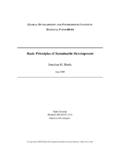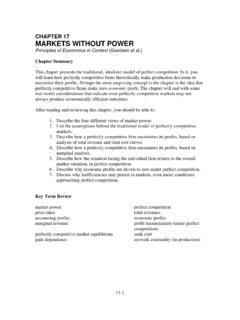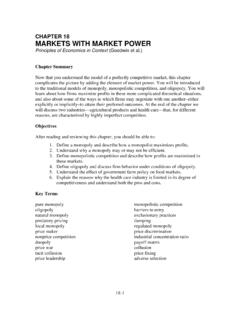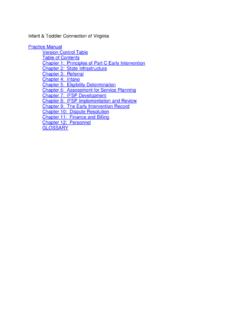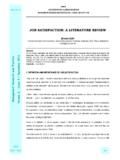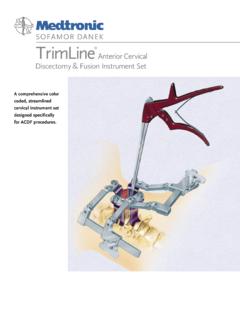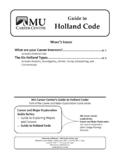Transcription of Macroeconomics and the Environment - Tufts …
1 Macroeconomics and the Environment by Jonathan M. Harris and Anne-Marie Codur A GDAE Teaching Module on Social and Environmental Issues in Economics Global Development And Environment Institute Tufts University Medford, MA 02155. Copyright 2004 Global Development And Environment Institute, Tufts University. Copyright release is hereby granted for instructors to copy this module for instructional purposes. Students may also download the module directly from Comments and feedback from course use are welcomed: Tufts University Global Development And Environment Institute Tufts University Medford, MA 02155. E-mail: 1. THE CIRCULAR FLOW MODEL AND THE BIOSPHERE. The Economic System and the Environment A basic building block of economic theory is the standard "circular flow" model of an economic system. As illustrated in Figure 1, this model shows the exchange of goods, services, and factors of production between two types of economic actors, consumers (households) and producers (firms).
2 However, the Environment and the natural resources which make economic production possible do not appear in the usual version of this model. Figure 1. The Standard Circular Flow Model When a good or service is purchased, two kinds of flow occur: the good moves from the firm to the household and a corresponding payment moves from the household to the firm. Similarly, when firms purchase factors of production, a payment of money for the use of these factors accompanies the flow of factor services from households to firms. These transactions are symbolized on the graph above by the arrows going in both directions from firms to households and vice versa. We distinguish between the two kinds of flows, real economic flows and the monetary flows which are their counterpart. The former are called "real" as they correspond to transfers of tangible things: goods and services flowing from firms to households.
3 Factors of production flowing from households to firms. Can we locate the Environment or natural resources in this picture? Certainly natural resources are essential to production: agriculture requires productive soils, industry requires fuels, water, and minerals. Consumers need drinking water, and many environmental resources, such as beaches and woodland, are in high demand. How is all this reflected in the circular flow? 1. Factors of production, which are also called inputs for the production process, have traditionally been divided into three categories: land, labor, and capital. "Land" is the term which is used by economists to represent all natural resources used in economic production, including soils, water, forests, species, minerals, fossil fuels, and other such resources. The first thinkers who studied economic mechanisms during the eighteenth and nineteenth centuries recognized the importance of land in the production process, and emphasized the existence of natural constraints on economic growth.
4 These theorists included the Physiocrats such as Quesnay, who developed the first circular flow approach in 1758, and the Classical Economists of the late eighteenth and nineteenth centuries, including Adam Smith and David Ricardo. Later, in the second half of the 19th century, economists focused increasingly on the two other factors of production, capital and labor, which were essential in the growth of the industrial sector, as rapid industrialization became the major economic phenomenon of these times. The eclipse of natural resources in economic thought lasted more than a century. Only recently, with the increasing urgency of environmental and resource problems at local, national, and global levels, have economists once again focused on the issues of natural resource constraints and the issue of what has come to be called natural capital.
5 Natural capital includes all natural resources as well as the Environment . It is essentially an updated interpretation of the classical economic concept of "land". Using the term "natural capital" emphasizes the importance of these natural factors to the production process. It also indicates that what we ordinarily call "capital" is really manufactured capital. Both types of capital are essential to the productive process, and both contribute to society's wealth. Linking the Economic Sphere and the Biosphere Returning to the circular flow model from Figure 1, let's consider whether the simple diagram deals adequately with natural capital. Economic models of the circular flow are usually presented as totally self-contained. But who or what ultimately provides households with the factors of production which will become inputs for the production sphere?
6 It is fairly clear that labor and manufactured capital are regenerated through the circular flow model in Figure 1 -- the provision of food and other necessities makes more labor possible, and investment builds up manufactured capital over time. But what about the first factor of production, natural resources? NOTE terms denoted in bold face are defined in the KEY TERMS AND CONCEPTS. section at the end of the module. 2. Obviously, households and firms do not "create" energy, minerals, soils, water, forests, species, and all the diverse elements which form the broad category of natural capital. They may "own" them - if the legal system adequately defines private property rights to these different resources -- but they cannot generate them, or replace them if they are used up. The "hidden". provider of these amenities, whether you call it Nature, Planet Earth or the biosphere, needs to be reintroduced in the picture as a major actor -- or perhaps better as the stage -- without whom the whole economic "show" could not take place.
7 How can we introduce the biosphere into the circular flow? We need to show the complete picture of its relationship with economic activity: as a provider of natural resources and also as the receptor of various undesirable outputs of the production/consumption processes (pollution and wastes). Since the sphere of economic activity (we will call it the "economic sphere") is embedded in the biosphere, we can replace the previous graph by a more complete one that represents the diverse flows of inputs and outputs between the biosphere and the economic sphere as well as inside the economic sphere. This is shown in Figure 2 below. Figure 2. The Circular Flow Linked to the Biosphere 3. We must also take into account the fact that some of the wastes and pollution rejected in the biosphere are naturally recycled through biological processes and geophysical processes.
8 For instance, wetlands play an essential role in purifying polluted waters. A few of the wastes of the production process are also recycled through the industrial system itself (including some paper, glass, and metals) and reinjected again into the production process as raw material. In addition, the earth itself is not a closed system and exchanges flows of energy with outer space - the energy flows it receives from the sun and the flows it releases in space (heat loss). If we include these additional flows, we obtain a more detailed version of the circular flow presented in Figure 3. Figure 3. Circular Flows with Energy and Recycling What does this new and expanded picture of the circular flow imply for economic theory? There are at least two major implications: 1. The recognition that natural processes provide an essential support to human well-being that needs to be adequately taken into account in all attempts at measuring well-being.
9 2. The recognition that this support is finite and that there are limitations both in terms of the inputs which can be extracted from the biosphere and the waste outputs which can be put back into it. 4. This means that we have to do some rethinking of standard economic concepts such as gross national product and economic growth. If we take the full circular flow into account, we will need to revise the standard ways of measuring economic wealth and income, and also to reconsider the effects of continual economic growth on human well-being. 2. REDEFINING NATIONAL INCOME AND WEALTH. Limitations of GNP/GDP. Economists measure the economic output of a society using indicators such as gross national product (GNP) or gross domestic product (GDP)1. While it is widely recognized that such measures do not quantify human well-being, both economists and policy makers often assume that an increase in GDP corresponds to an increase in welfare.
10 But an understanding of what GDP includes, and excludes, suggests that the relationship between economic production and welfare is more complex. We now turn to a discussion of the limitations of GDP. GDP is not a good measure of human well-being. Human well-being depends on consumption of goods and services, but on many other factors as well. We can distinguish between two broad categories of human activities: those which are "rewarded" by a payment - a monetary flow- and those which aren't. Only the first type are taken into account in the computing national income. All the others -- including domestic and family tasks, taking care of children and elderly relatives, volunteer community work, and leisure time activities such as reading, cooking, playing music, going to the beach -- are not included in standard economic indicators We can revise our circular flow diagram to show that the sphere of human activities, while included within the biosphere, is broader than the purely monetary activities which are measured as GDP.
